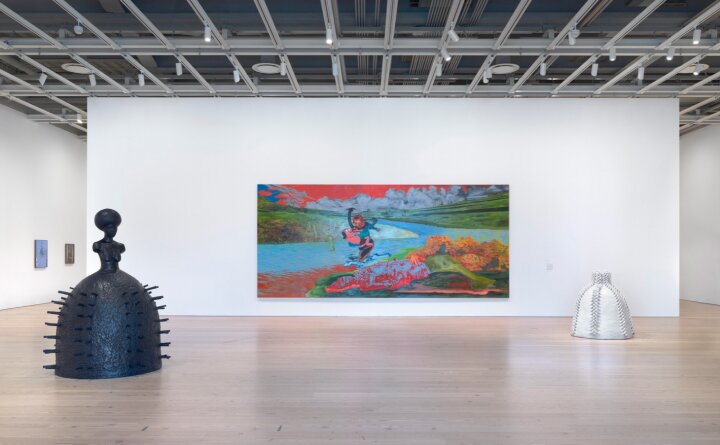
“I have always had an admiration for things that are well made, or not even well made. What you have to make in order to live.” Artist Margaret Kilgallen shared this remark in a 1999 meeting with creator Eungie Joo for the Hammer Museum. Kilgallen’s fondness for how and why things are made is her very own impression practice. She made her works totally by hand, without stencils, tape, or projections. Her surfaces incorporate train vehicles, dividers, reused canvases, and disposed of book covers. Another person’s surplus or dismissal was her beginning stage. Kilgallen’s commitments exist inside the domains of society, women’s activist, and road craftsmanship, regularly at the same time.
The Aspen Art Museum, is the craftsman’s first after death historical center display and the biggest introduction of her work since the 2005 show titled In The Sweet Bye and Bye at REDCAT in Los Angeles. The rejoining of this enormous assortment of work feels like a few streams merging into a waterway and overflowing its banks. It is overpowering, however it is lighting up to perceive how the craftsman’s comprehension of typography, picked up from years as a book conservator and a degree in printmaking, work with stories and figures — for example, in the serif-like establishing of her tree trunks. In particular, the presentation is a critical commitment with and documentation of her visual vocabulary and detached signals.
Numerous commentators are enticed to portray Kilgallen’s work as nostalgic, however her style does not fall into any one period. The shading plan speaks to one period and her textual styles, regardless of whether strong and business or kitschy — the last reviewing, state, a jamboree in a boondocks town — speak to another. Wistfulness additionally suggests a specific memory, scoured of the negative, which isn’t what’s going on in the craftsman’s work. No place is this more obvious than her steady come back to the female figure. The conspicuous dull lips, jumping stance, columnar bodies, and a cover of hair are developed from refined lines that trim through the endured and worn spaces where she initially made the works of art. The trailing purpose of a scarf that swoops around a head and secures under the jaw echoes the tips of leaves on a bowing branch, which itself reviews the twist of forehead line. While her content floats and tangles, the lady as storyteller stays undaunted.
These ladies resemble Greek goddesses, not physically one of a kind, however every one unpretentiously flagging her story with a posture or instrument. For instance, the name Fanny, all in tops, rests close pictures of a swimmer that review Australian 1912 Olympic boss Sarah “Fanny” Durack who went to break 12 world records in 6 years, all in a fleece swimsuit. The incredible 1940s banjo artist Matokie Slaughter, whose picture didn’t make the fronts of the collections she was included on, is depicted as a female figure holding a banjo. May Rindge lost her Malibu land rights to the development of the Pacific Coast Highway in a 1923 Supreme Court administering. She inevitably created and sold 22 miles of sea front without anyone else, just to lose it all in the 1929 stock accident. Rindge is appeared as a lady holding a rifle. Kilgallen’s figures are constantly exhibited in an open setting, so the look is never voyeuristic. We see what the ladies enable us to see.
Craftsman Lauren Napolitano (otherwise known as PepTalks) experienced childhood in the Bay Area, experiencing Kilgallen’s road workmanship during the 1990s. She told Hyperallergic, “Margaret’s work, for me, resembled an entryway just flung open,” taking note of that her female way to deal with a society craftsmanship style, “truly gave me authorization to express my very own vision. She was this encouraging sign that ladies could succeed and be regarded in spite of being in a male-ruled specialty.”
In Kilgallen’s 2001 meeting for Art 21 on PBS she stated,In Kilgallen’s 2001 interview for Art 21 on PBS she said, “I often feel like so much emphasis is put on how beautiful you are and how thin you are and not a lot of emphasis is put on what you can do and how smart you are. I would like to change the emphasis of what’s important when looking at a woman.” The pressure in Kilgallen’s craft isn’t established in the complexity among old and new or among structure and substance. Through unobtrusive signals she squeezes us to recognize our shallow decisions, explicitly of ladies, and propels all of us to see all the more profoundly.